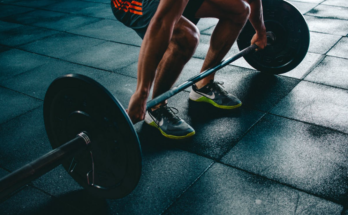1. Introduction: Redefining Fitness for All
Traditional fitness messaging often centers on extremes—body transformations, intense regimes, or rigid routines. But Fitness Without Boundaries champions a different narrative: fitness as an inclusive, adaptive, and welcoming journey for people of all bodies, abilities, backgrounds, and life stages. This approach is not only powerful for physical health but also transformative for mental well-being and community connection.
In this article, we’ll unpack what it means to break fitness boundaries, explore the benefits, share actionable strategies, and highlight inspiring real‑world examples.
click here
2. What Is “Fitness Without Boundaries”?
At its core, Fitness Without Boundaries means:
- No barriers: Removing physical, social, psychological, and financial obstacles that traditionally limit participation.
- Adaptability and customization: Designing workouts to accommodate diverse needs—disabilities, chronic conditions, different body types, ages, and experience levels.
- Community and belonging: Building environments where everyone feels seen, respected, and supported.
- Flexible mindset: Embracing variations in routines, recovery, rest, and self‑care—not driven by punishment or extreme targets.
This philosophy aligns with the rise of inclusive fitness—a movement growing across gyms, recreation centers, digital platforms, and community projects.
3. Why Inclusive Fitness Matters
a) Access for Everyone
Fitness benefits are fundamental: better cardiovascular health, strength, flexibility, mood, and longevity. Yet obstacles like inaccessible spaces, cost, or “unbelonging” leave many behind. Inclusive fitness actively removes those barriers so everyone can participate meaningfully.
b) Better Physical & Mental Health
Inclusive programs reduce isolation, boost confidence, and improve quality of life. Group environments support mental well-being by fostering belonging and peer encouragement.
c) Challenging Industry Bias
The traditional fitness culture often favors slim, able‑bodied, young, and normatively athletic bodies. The inclusive fitness movement pushes back by celebrating all bodies and rejecting diet culture and anti‑fat bias
d) Community & Connection
Fitness becomes more than exercise—it becomes a way to connect, support each other, and grow together. Events, mentorships, and group classes reinforce social bonds and shared growth.
4. Principles of Fitness Without Boundaries
A. Physical Accessibility & Environment Design
- Accessible spaces: Ramps, wide pathways, seating-based equipment, clear signage for sensory needs
- Adaptable equipment: Adjustable resistance, seated alternatives, tactile or audio-guided machines to assist those with mobility or visual impairments.
B. Inclusive Staff Training & Mindset
- Educated trainers: Training in adaptive and person-first communication, disability awareness, and empathetic coaching
- Language matters: Use inclusive, respectful language focusing on abilities, not deficits.
C. Workout Adaptations & Program Design
- Customizable routines: Exercises with multiple progressions (e.g. wall push-ups, seated bands) tailored to individual capabilities
- Adaptive programs: Specialized classes for wheelchair users, intellectual disabilities, chronic conditions—training strength, mobility, endurance in safe, effective ways
D. Fostering Community & Belonging
- Representative imagery & staff: Diverse marketing and leadership so people see themselves represented
- Events & social opportunities: Group challenges, mentorship programs, inclusive events to strengthen bonds
E. Flexible Mindset & Body-Positive Culture
- Joy over guilt: Encourage movement because it feels good—not as punishment or obligation .
- Flexible planning: Mix workout intensities, rest days, and variety to prevent burnout and maintain balance
5. Real-World Models & Success Stories
— Fitness Without Boundaries charity (UK)
A nonprofit that offers in-person and online accessible fitness classes, including specialist rehabilitation programs for conditions such as cancer and Parkinson’s disease. They bridge fitness and physical therapy at affordable cost
— BlazeSports America & Adaptive Training Academy
Sports and training organizations delivering adapted programs for people with physical disabilities and providing inclusive fitness certification for professionals
— Adaptive CrossFit, Planet Fitness, F45 UK
Mainstream brands promoting inclusivity through policy, adaptive classes, body-positive messaging, and staff education
— Power Hour (Chapel Hill CrossFit)
A free, inclusive class for young adults with autism and developmental disabilities. Participants with and without disabilities work together on strength, balance, and endurance each week
6. Benefits of Embracing Fitness Without Boundaries
- Empowerment: Individuals reclaim control of their bodies, regardless of ability.
- Consistency: Welcoming environments encourage long-term commitment.
- Innovation: Inclusive demand drives adaptive technology, better equipment, and smarter program design.
- Equality: Fitness becomes a right—not a privilege reserved for select demographics.
- Wellbeing culture: Focus shifts from body transformation to holistic health, joy, and shared experience.
7. Practical Tips: How to Adopt It
For Gyms & Trainers:
- Audit the facility for accessibility: ramps, space, signage, and adaptive tools.
- Offer staff workshops on adaptive training, inclusive language, and mental health awareness.
- Diversify class formats: seated, sensory‑friendly, low‑impact, and multi‑level instruction.
- Review marketing and visuals for representation of diverse bodies and stories.
- Host inclusive events and mentorship pairs.
For Participants:
- Choose spaces that explicitly state inclusivity or offer adaptive options.
- Communicate with instructors about your needs—don’t wait for them to guess.
- Mix types of movement: strength, mobility, flexibility, outdoor, seated, and mindful.
- Prioritize movement for wellness and enjoyment—not punishment.
- Seek communities and online platforms that align with positive, body‑affirming values.
For Policy & Community Advocates:
- Lobby for accessible equipment and facilities in public centers.
- Support inclusive fitness programs financially or through volunteerism.
- Encourage awareness and sensitivity training in recreation providers.
- Promote inclusive classes in schools, workplaces, and community centers.
9. Common Misunderstandings Debunked
- Inclusive fitness isn’t just physical access: Real inclusion offers tailored workouts, representation, and social-emotional support—not just ramps
- Not separate silos: Inclusive fitness shouldn’t segregate people—it should integrate adaptations so everyone can participate side by side.
- Not only for disabilities: Body diversity, aging, chronic conditions, and neurodivergence—all benefit from inclusive options and mindset shifts.
- Compensatory vs joy-driven movement: Fitness shouldn’t be about punishment or guilt—it should reflect what brings you health, energy, and fulfillment.
10. Future Directions: Where Inclusive Fitness Is Going
- Technology-enabled adaptation: Wearables, apps and online platforms offering audio cues, adjustable plans, and virtual inclusive trainers
- Public health movement: City designs integrating adaptive outdoor gyms, sensory‑friendly zones, inclusive trails, and programmes accessible to all ages and abilities
- Professional education scaling up: More fitness professionals certified in adaptive and inclusive methods—from CrossFit to rehabilitation settings
- Cultural shift: Continued dismantling of diet culture and body idealism, uplifting diverse voices in fitness leadership and storytelling
11. Final Thoughts: Fitness for All—Not As An Afterthought
Fitness is not a privilege for a narrow segment of the population but a fundamental pathway to health, confidence, connection, and community. Fitness Without Boundaries invites us to rethink what a gym, workout, or class should feel like—welcoming, adaptable, community-oriented, and inclusive by design. Whether you’re a participant, trainer, advocate, or policymaker, this philosophy offers a powerful way to transform lives.
By adopting inclusive principles, we don’t just change how people move—we change how people see fitness: not as an exclusive club, but as a shared experience open to all.
Read more.




